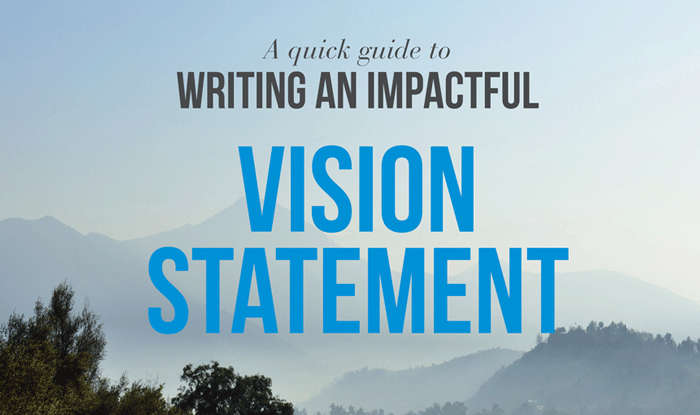One of the most powerful tools for creating strategic awareness in your nonprofit organization is your Vision statement.
A vision statement is an expression of what your organization would like to see as a possibility and a future for the community and stakeholders you serve. Having created the vision statement, then all decisions, projects and services can be filtered through the vision statement to assess whether they are truly “vision-driven” and hence creating the strategic awareness of possible futures and the impact that your organization desires.
What a vision statement is not
A Vision statement has traditionally stated what an organization’s core values and core purposes are, maybe with some values thrown in for good measure. This is essentially inward looking and only concerned with the organization.
This is why most vision statements work against strategic awareness. They are too often about the vehicle of delivery. Our point of view is that the vision statement should be about the future your organization wishes to create for the community and stakeholders you wish to impact.
The right questions to ask before writing your vision statement
Creating a Vision statement is quite simple and easy. It is usually done as part of the nonprofit strategic planning process, as one of the first exercises of the strategic plan facilitation
The planning group (consisting of various people who are valued by the organization) are asked the question:
“What is the future we would wish for our community (not for this organization!)”
“What lasting legacy would we desire for our community?”
“Who is the community we are servicing? Will they change? Do we need a broad or narrow description of our community?”
These questions will assist to get at the core essence of why the organization was created in the first place. This should take no more than about an hour. The days of Vision fatigue are over (you’ve heard about this, when large groups of people meet over lengthy periods of time to debate wordsmithing of something that no-one will ever use?).
What an impactful vision statement looks like
Here are some examples of Vision statements that create strategic awareness and future possibility:
“We value a community where there is confidence in aged care, where cultural diversity is truly celebrated and family and community remain connected.” –World class regional Aged Care facility specializing in multicultural care
“Our vision is for an ethical environment where training and employment services lead future requirements, career pathways are valued equally, safety and security is paramount and people and teams are motivated to excel.” Large and innovative training and employment organization
These Vision statements have “oomph” and really capture what the organization strives to create, it represents why the founders created the organization and why Board members choose to sit on the Board.
How to put your vision statement to good use
The next discussion then should be about how well we map our existing programs against the key elements of our Vision statement, and how we “walk the talk”. This discussion, at both Board and staff level, should focus on the strategic issues that are raised, and the awareness that is required to drive the organization towards creating the future and the possibilities that the Vision articulates.
Here are eleven things you can do to create strategic awareness from your Vision statement:
1. Have the vision statement on each Board agenda to remind the Board why they are meeting
2. Encourage the Chairman and other Directors to use the Vision statement to assist in gaining clarity around a discussion or decision, and to create greater strategic awareness around the issue
3. Describe in the annual report how you are using the Vision statement to drive the organization forward, and provide stories that illustrate the “walking the talk”.
4. Embed discussion of the Vision statement into the Board induction program with new directors, and how the organization uses the Vision statement
5. Use the Vision statement as the first point of discussion and filter at your strategic planning session.
6. Ensure that all strategies and actions from the strategic plan directly align with the Vision statement.
7. Evaluate how the Board understands and uses the Vision statement as part of your Board evaluation process.
8. Evaluate how key stakeholders perceive the Board understands and uses the Vision statement as part of your Board evaluation process
9. Embed the key elements of the Vision statement into the performance management framework of staff, especially senior leadership
10. Ensure that all new projects specifically address the key elements of the Vision statement.
11. Revisit the Vision statement annually as part of your annual strategic plan review, and ask the questions: “Does this still represent the essence of what we want to create?” “Has anything changed that will necessitate a change in our Vision statement?"
If you are able to show that all the above are in place, then you are truly a vision-driven organization, strategically aware, a social innovator, an organization that makes a difference in all it does, and an organization that is creating a better place for the stakeholders who have placed their trust in you.
Are you and your Board willing to be the social innovators that your Vision statement invites you to be?
If you enjoyed this post, make sure to like and share.




